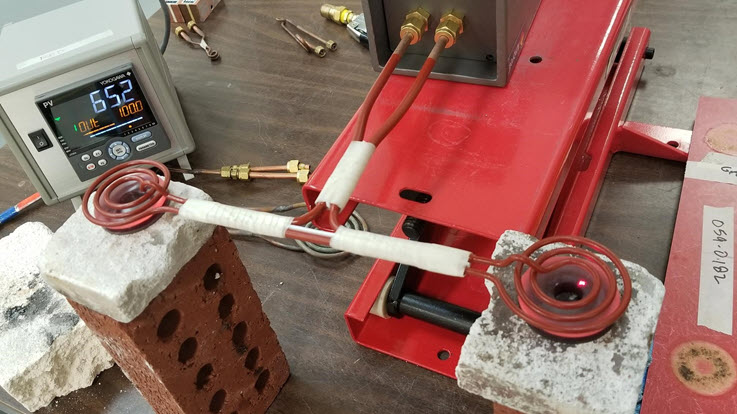Induction Brazing an Aluminum Assembly
Objective A company wanted to assess using induction heating for their aluminum assembly brazing process, and contacted THE LAB at Ambrell to utilize...
Applications
Applications: More
Applications: More

Industries:
Industries: More
Industries: More
Industries: More

Products:
Products: More
Services:
Services: More

Learn:
Learn: More
About:


A manufacturer of pistons approached THE LAB at Ambrell with a shrink fitting application. They had been using an inexpensive portable induction unit, but found it unreliable for their application. Their application involved heating magnetic steel pistons for shrink fitting onto a chrome shaft. The target temperature was 1,100 °F (593 °C).
Visit our induction shrink fitting page to get a sampling of additional shrink fitting applications assessed by THE LAB.
THE LAB determined that an EASYHEAT 2.4 kW, 150-400 kHz induction heating power supply with a single position multiple-turn pancake coil would be the right solution based on their requirements. Initial tests were conducted to optimize the power delivered to the part. An optical pyrometer was used to monitor one of the pistons as the two were heated. The pistons were heated with a small gap between the part and the induction coil. The pistons reached 1,100°F (593 °C) within one minute.
For this client, getting a repeatable, reliable result drove the desire to switch to Ambrell. The handheld unit they were using wasn't delivering the required results, and THE LAB was able to offer a solution that would deliver great results every time. When compared to other heating methods for shrink fitting, induction's benefits include its speed along with its localized, repeatable and non-contact heating.
THE LAB at Ambrell has a wealth of experience with induction shrink fitting applications. And, to learn more about free application testing, visit our page on THE LAB or contact us today to get the process started. 

Objective A company wanted to assess using induction heating for their aluminum assembly brazing process, and contacted THE LAB at Ambrell to utilize...

Induction heating is a process that uses electromagnetic fields to heat electrically conductive materials. It has been used in numerous industries...

Induction heating, a process that uses electromagnetic induction to heat electrically conductive materials, is often thought of for large industrial...